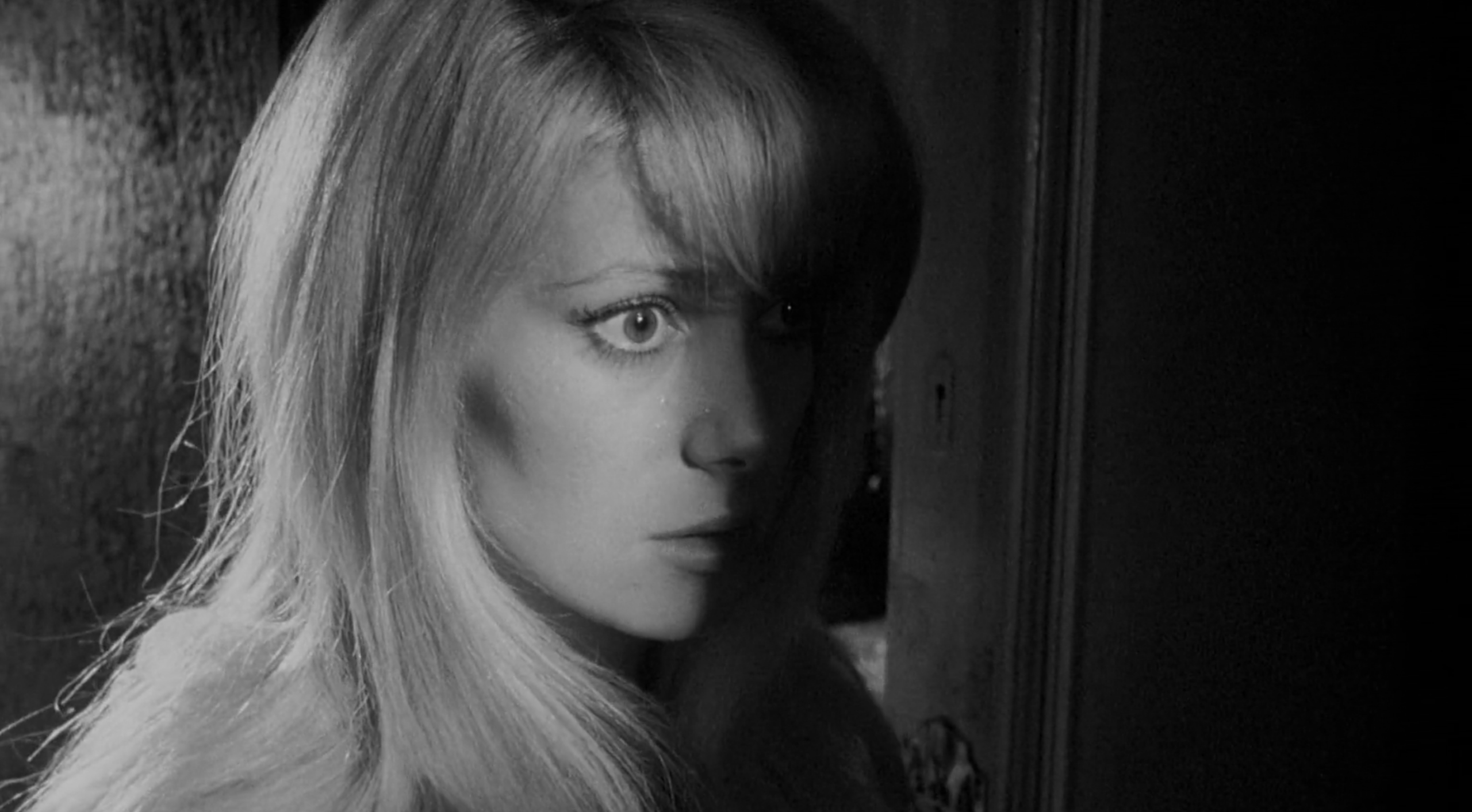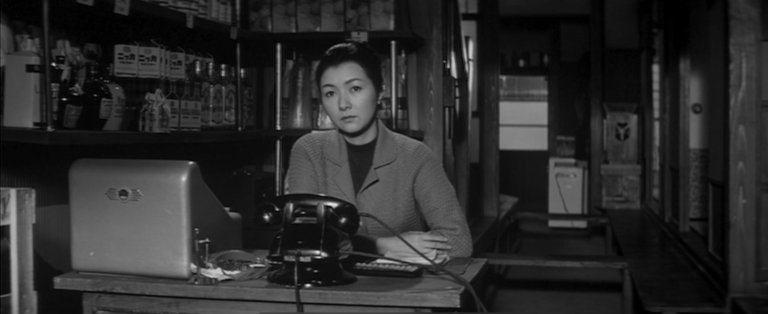Polanski’s second feature, made on the murky shores of the Thames, begins quiescently with Catherine Deneuve’s iris. Even in the absence of colour, one makes out her milky green eyes staying fixed before a forced cut roils its sleep. There’s movement now – in all directions, rudderless in search of an object. It stops, without warning. We exit the imposing proximity of her eye and move back into the respected place of an observer. As she’s snapped out of her sleep by a cream-caked client, we get this odd sense of a disturbed woman in an undisturbed world. Polanski, for his part, has already given us what we are to expect, thematically and stylistically, from his first film in the English language. In the ninety or so minutes that are to follow, we experience a tremendous control of body and camera (thanks to Deneuve and Gilbert Taylor) that combine to produce a sublime milestone in genre filmmaking. A real achievement in fashioning the sought-after “mood” that horror strives for. Yet, the film is one that only expands horizontally in scope, never vertically in substance.
Let me explain. Repulsion is horror turned inside-out – we are viewing the world from the knife-wielder’s perspective. It transfixes the viewer within the confines of an apartment and breathes new dimensionalities into its small rooms. But, in the absence of a thesis, a worldview, it manacles itself only to the possibilities of the medium, not the character. This isn’t necessarily a bad thing. However, if one were to look at Polanski’s previous film Knife in the Water, there’s a very similar restriction of space – a ménage à trois on a yacht – but there’s evidently a discussion on infidelity and moral incongruence. As the film is finally suspended at crossroads, we are called in to be more than observers. However, returning to Repulsion, we aren’t allowed to engage with Carol and her actions in the same way. Yes, there are moments where it insinuates a man’s overriding desire to objectify her – even Colin, the softest of them all, rushes to exchange tongues with her – but it stops halfway to resume efforts of projecting her state of mind. “I felt like making a scary movie,” Polanski says in retrospect. Gérard Brach, his co-writer, concurs that such was the intention. Nonetheless, he goes on to add that they couldn’t stick to such a trivial notion and wished to explore schizophrenia.
The result is a claustrophobic masterstroke that successfully transports us into Carol’s mind. Jazz notes click along with the stamp of her heels, denoting torpid periods, and the sudden bells and clangs herald a seismic change. But a front-row seat to her manifested insecurities leaves us much to desire from the film’s pathos. At every turn, we see that middling intention that was evident in Brach and Polanski’s statements – they wished to make a film that didn’t border on trivial scares, and in doing so, left the film halfway in its new direction. “Please don’t go,” pleads Carol to her sister, ostensibly a much saner woman in her presence. Was her insouciance to blame? To this end too, we are left making assumptions. Bill Horrigan in his essay on the film quotes Bataille to underline Polanski’s aesthetics, “Art, no doubt, is not restricted to the representation of horror, but its movement puts art without harm at the height of the worst and, reciprocally, the painting of horror reveals the opening onto all possibility. That is why we must linger in the shadows which art acquires in the vicinity of death.” To this, I agree. Yet, for us to linger on that opening, mustn’t art more than just fashion circumstances of harm? To feel harm, mustn’t we live vicariously? In this regard, Repulsion only roots us in Carol’s apartment, never in her shoes.
Let me not dwell too long in Repulsion’s demerits for its merits are aplenty. When Polanski notes that Repulsion was his “shoddiest work” from a technical standpoint, I’d disagree. As a director, he holds himself and his oeuvre to a rightfully high standard, but despite its humble finances, the film produces an effect that I’ve rarely felt within its genre – even decades after its release. Sure, he may have blocked his scenes with much more purpose on Polish waters before his move to London and perhaps would outdo himself in Rosemary’s Baby (which I’m, sadly, yet to see), but he plays that note of exaggeration to perfection here. When Carol, lost in between days and nights, exits her room and stares down the hallway, there’s a weighted balance between her movement within the frame and the angularity of our view. When the living room is made to feel distended and dispersed through the mere wideness of the lens, we are pressed against her to accentuate the spectrality of her new existence. There’s a staunch purpose behind the array of shots in this venture, so much so that one could never tell that it had small-time pornography producers bankrolling it. It’s Polanski’s testimony to those with smaller budgets: being tight-fisted isn’t an excuse for being ham-fisted.
Repulsion should be remembered for what it can allow us to reach – a veritable range of emotions that opens on the other end of harm; a real possibility to tap into what horror can unwittingly solicit from us. However, it in itself fails to reach that opening by not transplanting us in Carol’s place. The middling intention that concluded this film leaves Carol to appear before us as a phenomenon, a bundle of tightly wrapped schizophrenic symptoms. Despite the meek insinuations, she’s never a whole person. Polanski recollected that when the film was finished, it was shown to a psychiatrist who noted and appreciated the film’s diligence in portraying the lived-in experiences of disturbed individuals. However well-intended (and well-crafted), that limits the viewer as an observer. Being non-participants, we are never allowed to reason for her actions. The consequence? We only look at a wild eye that seemingly lies in wait since her disturbed childhood, opening us onto her and closing the aftermath of her, leaving us to divine what might or might not have been.





